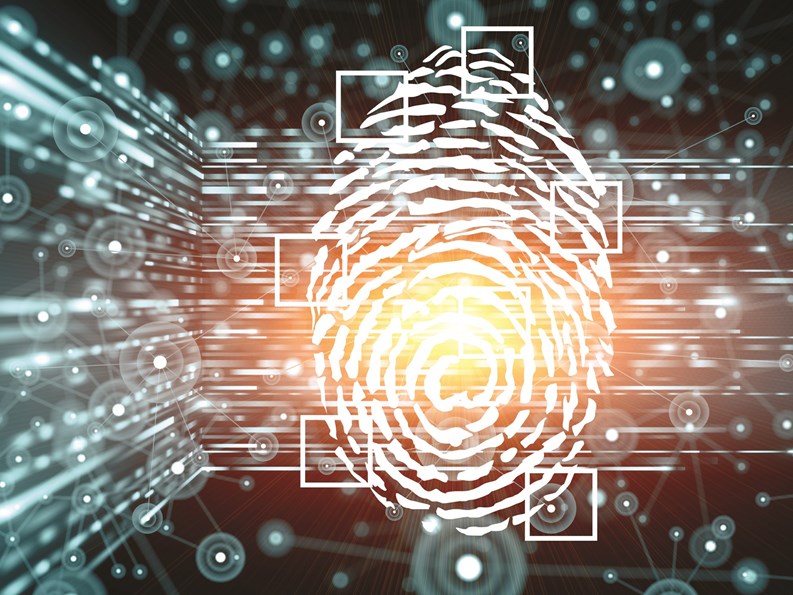Feeling safe in one’s home is one of life’s most basic requirements. In an urban residential building, it sometimes takes a lot more than locking the doors and making sure your stove is turned off before going to bed to achieve that feeling. Even though they aren’t trained security experts (and don’t necessarily have to be) the people who work in your condo or co-op building play an indispensable role in the building’s safety and emergency-response system.
Staff Roles in Security and Safety
Exactly what a staff member’s role in an emergency will be varies from building to building; a building with a hired security guard may require less involvement from other staff members than one without a guard. The size of your building, its location and other factors can influence the responsibilities of your building staff in emergency situations.
Some things, however, are universal. “It doesn’t matter if you’re a porter or doorman in a small building or in a huge skyscraper,” says Mike Green, the deputy director of security operations with the Thomas Shortman Training Center, which runs a joint labor/management training program for Service Employees International Union (SEIU) Local 32BJ members. Course work includes such subjects as basic language, reading and writing skills, communication and computer skills, and industry-related coursework like basic plumbing and carpentry. The center also offers a security-training component as part of a pilot program called New York Safe & Secure, that began in May of 2004 as a collaborative partnership between the union, the city, and the real estate industry.
The New York Safe & Secure security awareness training curriculum offers four hours of security awareness training to doormen, porters, concierges, resident managers and building superintendents as well as commercial office building cleaners and maintenance workers. Training includes methods for spotting suspicious behavior or packages and swiftly alerting police and fire departments. The New York Safe & Secure security training program for private security officers provides a much more intensive 40 hour training curriculum designed to cope, if not prevent an actual attack or emergency.
“You’re going to be the one people turn to [in an emergency]. If there’s a blackout, you know the building better than anybody, and people are going to come to you,” says Green.
“Building staff must triage the scene and maintain calm,” adds Matthew Nerzig, a spokesman for Local 32BJ. “Triaging the site includes obtaining all necessary information, determining locations of the majority of people present in building, securing logs or other relevant data from access points, locating persons in need of special assistance, holding the elevator in lobby for use by responders, and alerting building residents of situation. After all that, another key role is to isolate and contain the danger whenever possible until emergency personnel can arrive on the scene,” Nerzig says. Local 32BJ represents 75,000 cleaners, doormen, porters, maintenance workers, window cleaners, security guards, superintendents, and other personnel in New York, New Jersey, Connecticut, and Pennsylvania
Even when there’s not an immediate emergency or crisis, there are a variety of ways staff members are involved in their building’s security, says William Aristovulos of the New York Superintendents Technical Association (STA). On a day-to-day basis, the building staff may be responsible for making sure security cameras are running properly, or that videotapes are changed on time. Aristovulos adds that it’s important to use a high-quality surveillance system—some of the cheaper models might not be made to last, or may offer poor picture quality.
And You Are…?
Obviously, another vital aspect of your building staff’s role is being aware of who is coming into the building. In some high-end buildings, there may be two levels of human access control: the doorman, and the elevator operator. When present, the elevator operator is responsible for ensuring that elevators go the proper floor, and allowing only authorized people to go to a particular floor. In most buildings, however, it’s the doorman who is often the final word on who is ultimately allowed to even enter the building.
Sometimes, the doorman has non-human help. “In many residential buildings, video surveillance stops anything from occurring in most instances,” says Aristovulos. “But also, simply having a doorman is a big, big safety advantage, because the doormen know who’s coming in.”
Aristovulos says that sometimes someone who wants to get into the building will walk closely behind a known resident as if they are together. “In most cases it’s OK, it turns out to be a friend or relative who is following the person in,” he says. “But on a number of occasions, you ask the known resident if they know the person and they say, ‘No, I don’t this person,’” and that’s a potential security problem right there.
For example, Aristovulos recalls an incident a while back that involved a “girl scout” who would ask elderly residents if she could use their bathroom and then, while out of the person’s sight, would rifle through the apartment. Aristovulos remembered throwing the girl out of his building, then reading about her in the newspaper later.
“That kind of thing doesn’t happen often, but you have to be vigilant,” Aristovulos says. “It doesn’t matter if the person is dressed in a three-piece suit with an attaché case, if he or she doesn’t belong, you have to question them. Some people get adamant, and I’m called in as the superintendent, and I have to tell them, ‘I’m sorry you’re offended, but the rule here is if we don’t know you, you can’t go up.’” Things can get particularly difficult when you’re stopping someone’s parent or sibling from entering the building, but it’s important to stick to your building’s security policy.
“Denying access to someone is probably the most common situation,” says Nerzig, “and posting standardized procedures for entry is critical. What is a valid ID? What are the log-in procedures? The customer service skills of the building service worker who is doing the denying will determine the level to which this situation will become problematic.”
Other instances building staff can find themselves in are fires, power failures, petty crimes, and medical emergencies during which Aristovulos says their main job will be to contact EMS. Again, calling authorities will be a primary responsibility. Drills and practice runs are an important aspect to a building’s security procedures as well.
“People in a panic may do irrational things, so if you wait for a real emergency before you have a drill, it will be pandemonium,” Green says. “If you have regular evacuation and fire drills, when the real thing happens, the stress level will still be high, but your residents will be more likely to do everything correctly if you’ve had [practice runs].”
The threat of terrorism has, of course, spurred a big interest in security in condos and co-ops. In reality, the odds of a residential building being attacked are minimal. However, the Safe & Secure program spends a good amount of time teaching people how to recognize suspicious activity of all types.
“The police department isn’t everywhere,” says Green, a retired New York City police lieutenant. “And there has to be someone who acts as the eyes and ears of the police and fire departments. The building workers are already there, and when something happens in the building, they’re the ones who are going to spot it first. Terrorists don’t do things on a whim, they do dry runs and rehearsals, they figure out the place.”
Safe and Secure
According to the mayor’s office, more than 5,500 residential building service workers have completed the Safe & Secure program since its introduction almost two years ago. The four-hour program offered for residential buildings offers training to service workers like doormen, concierges and porters.
“Essentially it’s an awareness program to help them become aware of any kind of emergency, from petty crimes to fires to bomb scares to terrorist events,” says Green, who runs the program. “We’re teaching them how to be more aware of their surroundings. If they come across a package that looks out of place and that no one is claiming, what should they do? Who should they call?”
Awareness doesn’t mean staff members should treat everyone with suspicion, or tackle an unknown person who walks into the building, but Green says a large part of the program is learning to be aware. That means noticing a person who seems to be hanging around the lobby for no reason, or if a delivery that is normally made in the afternoon is suddenly made in the evening. The program also gives tips on how to describe people with more detail after something has happened—not simply describing someone as “tall” or “old” since these terms can be relative.
“We teach them how to make observations,” says Green. “We see things every day but we don’t mentally record what we see; someone can commit a crime right in front of us and minute later if someone asks us who did it, we don’t know—we can’t describe it because we weren’t paying attention they way we should. We teach them tips on how to record what they see.”
The training also encompasses ways in which building staff can hold their ground politely but firmly. “Getting hooked by a rude, ill tempered person and being dragged down to their level is a very common mistake,” says Nerzig. “One aspect of New York Safe & Secure training focuses on the proper, professional and effective way to say ‘no.’”
Buildings interested in learning about the program can call (212) 388-3961 or log onto www.seiu32bj.org.
Responding Correctly
When a serious emergency arises, it’s almost certain that the assistance of the police and fire departments will be needed. It still may take a few minutes for the officials to actually arrive at the building after the call has been made, however, and it’s important that staff members always remember what their responsibility is and avoid taking on responsibilities that aren’t theirs.
“An important thing we tell them is, ‘Don’t get involved beyond your capabilities—you’re not a fireman or a doctor,’” Green says. “If there’s a problem in one room, close the door and keep people out; that may be the extent of your role. If something happens in the lobby, keep people out of it, and you’ve done your job. The idea is not to throw yourself on a bomb and say, ‘OK, I’m taking care of it because I was trained by Safe & Secure.’”
Every building is different from all others in some way, Green says, which is why the Safe & Secure program is held at the buildings themselves. By holding the sessions on-site where any emergency activity would actually take place, residents and staff can practice in the environment itself. Working on-site also allows trainers to look over the building before the class.
“The trainers find out if they have a hard time getting into the building, and point out areas a bad guy might want to concentrate on,” Green says. “This way we can tailor the training to their building.”
Managing Safety
Whether your building has just a doorman and a super, or a doorman, super, porters, and a hired security guard on duty, “Each building or group of buildings has its own style,” says Mark Lerner, president of EPIC Security Corporation in Manhattan. “In some of them, [the building staff will] man the radio system along with the guards; or the maintenance man or the superintendent will have a two-way radio where they can speak with the guards.”
Whatever the case, communication between security staff and your building’s management is vital. Lerner says his company has arrangements that involve regular meetings with managers in order to discuss security concerns. Lerner also says managers from his company will attend a condo or co-op board’s monthly meetings so that the members can ask questions.
“Management has a responsibility to establish a chain of command,” Nerzig adds, “and to ensure that workers are made aware of the policies they should follow in their day-to-day activities.”
And the manager’s role doesn’t stop with communication and oversight Nerzig continues. “Managing agents should also ensure that facilities are properly equipped—with fire extinguishers and [Automated External Defibrillators] (AED’s), for example—and that inspections are conducted in a timely manner. If there is closed-circuit TV and other surveillance equipment on the premises, management should ensure its operability.”
It’s also important for managing agents to be aware of both the obligations and opportunities represented by the service workers’ union, and to work with union staff members and representatives to take full advantage of the programs and courses offered by Local 32-BJ.
“The union plays an important role because they want to ensure that everyone is kept safe,” says Nerzig. “Well-trained workers are much less likely to panic in a crisis and won’t attempt to perform specialized tasks beyond their capabilities. Security awareness training provides building service workers with basic safety and security knowledge. Seemingly simple things such as refraining from using cell phones during a bomb threat or closing doors and getting low to the ground during a fire may actually save a building from destruction—and more importantly, save lives.”
At the end of the day, one of the most important factors in the building security equation is how secure your residents actually feel. That peace of mind comes from a confluence of factors, but chief among them is how the whole building community ultimately feels about the abilities and competence of its staff and security personnel. “You have to have the right chemistry, like anything else in life,” says Lerner. “You have to feel that your staff and your security company are well prepared and responsive to your needs.”
Anthony Stoeckert is a freelance writer and a frequent contributor to The Cooperator.







Leave a Comment